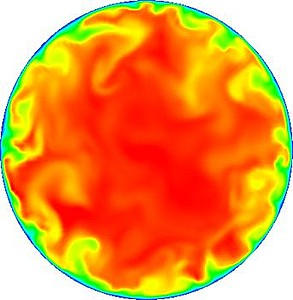PIPE SIZING PRESSURE DROP and HEAD FRICTIONAL LOSS

Description
PIPE SIZING
PRESSURE DROP
HEAD FRICTIONAL LOSS
Calculation Reference
Pipe Sizing
Cole Brook equation
Reynolds Number
When sizing a pipe for a fluid flow system, it is essential to consider pressure drop and head frictional loss to ensure that the system functions effectively and efficiently. To calculate these parameters, you can use the Darcy-Weisbach equation and the Moody friction factor.
Here's a step-by-step procedure for pipe sizing based on pressure drop and head frictional loss:
-
Determine the desired flow rate (Q) and the properties of the fluid, such as density (ρ), dynamic viscosity (μ), and kinematic viscosity (ν).
-
Select a tentative pipe diameter (D) and calculate the flow velocity (v) using the flow rate (Q) and pipe cross-sectional area (A): v = Q / A.
-
Calculate the Reynolds number (Re) using the formula: Re = (D * v * ρ) / μ, or Re = (D * v) / ν.
-
Determine the pipe's relative roughness (ε/D), based on the pipe material and surface roughness.
-
Obtain the friction factor (f) using the Colebrook-White equation or the Moody diagram, based on the Reynolds number (Re) and the pipe's relative roughness (ε/D).
-
Calculate the head frictional loss (Hf) in the pipe using the Darcy-Weisbach equation: Hf = f * (L/D) * (v² / (2 * g)), where L is the pipe length, and g is the acceleration due to gravity.
-
Calculate the pressure drop (ΔP) in the pipe using the Darcy-Weisbach equation: ΔP = f * (L/D) * (ρ * v²) / 2.
-
If the calculated pressure drop (ΔP) or head frictional loss (Hf) is too high or too low, adjust the pipe diameter (D) and repeat steps 2-7.
-
Once you have determined a suitable pipe diameter (D) that meets the desired pressure drop and head frictional loss criteria, verify that the pipe size is commercially available and suitable for your application.
Remember that this procedure assumes steady, incompressible flow and is best suited for relatively simple pipe systems. For more complex systems, non-steady flow conditions, or compressible fluids, other methods or computational fluid dynamics (CFD) models may be necessary.
Calculation Preview
Full download access to any calculation is available to users with a paid or awarded subscription (XLC Pro).
Subscriptions are free to contributors to the site, alternatively they can be purchased.
Click here for information on subscriptions.


